-
 Bitcoin
Bitcoin $79,557.5233
-4.15% -
 Ethereum
Ethereum $1,621.4541
-9.44% -
 Tether USDt
Tether USDt $0.9994
-0.02% -
 XRP
XRP $1.9973
-6.12% -
 BNB
BNB $555.1591
-6.26% -
 USDC
USDC $0.9999
0.00% -
 Solana
Solana $107.9107
-9.44% -
 Dogecoin
Dogecoin $0.1520
-9.57% -
 TRON
TRON $0.2335
-1.80% -
 Cardano
Cardano $0.5889
-9.29% -
 UNUS SED LEO
UNUS SED LEO $8.8794
-1.87% -
 Toncoin
Toncoin $3.0652
-5.67% -
 Chainlink
Chainlink $11.5147
-9.14% -
 Stellar
Stellar $0.2400
-4.01% -
 Avalanche
Avalanche $16.3792
-8.68% -
 Shiba Inu
Shiba Inu $0.0...01137
-7.20% -
 Sui
Sui $1.9576
-11.41% -
 Hedera
Hedera $0.1433
-11.17% -
 Polkadot
Polkadot $3.7257
-5.27% -
 MANTRA
MANTRA $5.9545
-5.07% -
 Litecoin
Litecoin $72.7435
-11.51% -
 Bitcoin Cash
Bitcoin Cash $274.8473
-8.05% -
 Dai
Dai $0.9999
-0.02% -
 Ethena USDe
Ethena USDe $0.9986
-0.05% -
 Bitget Token
Bitget Token $4.1799
-5.82% -
 Pi
Pi $0.5983
1.73% -
 Monero
Monero $201.0669
-5.69% -
 Hyperliquid
Hyperliquid $10.4496
-11.56% -
 Uniswap
Uniswap $5.1916
-10.64% -
 OKB
OKB $50.4885
-2.17%
How does NFT Cross-Platform Compatibility enable the multi-platform use of NFTs?
NFT cross-platform compatibility, achieved via bridging and standardized metadata, boosts NFT accessibility and liquidity across various blockchains and marketplaces, despite challenges in scalability, security, and standardization.
Mar 03, 2025 at 07:55 am
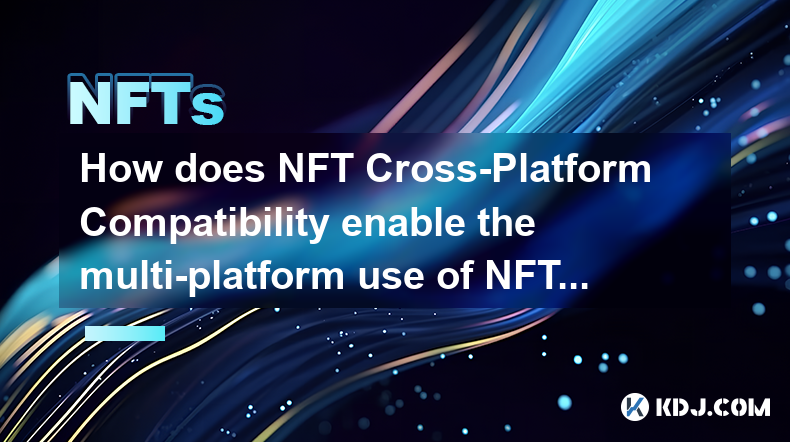
Key Points:
- NFT cross-platform compatibility allows NFTs to be used across different blockchain networks and marketplaces.
- This interoperability is achieved through various technical solutions, including bridging technologies and standardized metadata.
- Increased accessibility and liquidity are key benefits, boosting NFT utility and adoption.
- Challenges remain, including scalability, security, and standardization issues.
How does NFT Cross-Platform Compatibility enable the multi-platform use of NFTs?
The concept of NFT cross-platform compatibility refers to the ability of a Non-Fungible Token (NFT) to seamlessly function and be utilized across various blockchain networks and digital marketplaces. This goes beyond simply viewing an NFT; it implies full functionality, including trading, displaying, and using the NFT within different digital ecosystems. Without cross-platform compatibility, an NFT created on one blockchain is essentially trapped within that specific environment.
Currently, the majority of NFTs reside within their native blockchain ecosystems. This limits their usability and potentially reduces their value. For instance, an NFT created on Ethereum might not be directly usable on a Solana-based game or metaverse. Cross-platform compatibility aims to solve this fragmentation.
Several technological approaches are being explored to achieve this interoperability. One key method involves the use of bridging technologies. These bridges act as gateways, allowing NFTs to be transferred between different blockchains while maintaining their unique identity and attributes. This transfer often involves wrapping the original NFT into a new token on the destination blockchain.
Another crucial aspect is the standardization of NFT metadata. Metadata describes the NFT's properties and characteristics. If different platforms use different metadata standards, NFTs become incompatible. Standardization efforts, such as the adoption of common metadata formats, are vital for broader interoperability. This allows different platforms to readily understand and display NFT information.
The benefits of cross-platform compatibility are significant. It dramatically increases the accessibility and liquidity of NFTs. Creators can reach a wider audience, and users can leverage their NFTs across diverse applications. Imagine using your NFT avatar in multiple metaverse platforms or utilizing your in-game NFT item across different games. This enhanced utility directly impacts the value proposition of NFTs.
However, challenges remain in achieving seamless cross-platform compatibility. Scalability issues, particularly with bridging technologies, are a major concern. The process of transferring NFTs between blockchains can be slow and expensive, hindering widespread adoption.
Security is another critical factor. Bridges and other intermediary technologies need robust security measures to prevent exploits and theft. Any vulnerability could compromise the integrity and value of NFTs. Furthermore, the lack of complete standardization in the NFT space continues to hinder interoperability. Different platforms may use different formats or protocols, creating compatibility issues.
Moreover, the legal and regulatory landscape surrounding NFTs across different jurisdictions adds complexity. Ensuring compliance with various laws and regulations across different regions is a considerable hurdle in achieving true cross-platform compatibility. This requires a harmonization of regulations related to NFTs to facilitate cross-border use.
Furthermore, the user experience is a key aspect. Even with technological solutions in place, a seamless and intuitive user experience is essential for widespread adoption. Complicated processes for transferring or using NFTs across platforms could deter users. Therefore, user-friendly interfaces and tools are vital for facilitating the cross-platform use of NFTs.
The development of decentralized identifiers (DIDs) and verifiable credentials (VCs) offers a promising path towards enhanced NFT interoperability. DIDs provide a unique and verifiable digital identity for NFTs, while VCs enable the secure and trustworthy transfer of NFT attributes across platforms. This combination could greatly simplify the process of NFT cross-platform usage.
The emergence of layer-2 scaling solutions for various blockchains also contributes to improved NFT interoperability. By reducing transaction fees and increasing transaction speeds, layer-2 solutions make cross-chain transfers more efficient and cost-effective. This fosters greater ease of use and wider adoption of cross-platform NFTs.
The future of NFT cross-platform compatibility hinges on collaboration among different stakeholders, including blockchain developers, NFT marketplaces, and regulatory bodies. Developing open standards, implementing robust security protocols, and creating user-friendly interfaces are all crucial steps toward a truly interoperable NFT ecosystem.
Frequently Asked Questions:
Q: What are the main benefits of NFT cross-platform compatibility?
A: Increased accessibility and liquidity for NFTs, allowing them to be used across different platforms and increasing their overall utility and value. This also expands the reach for creators and provides more options for users.
Q: What are the biggest challenges to achieving NFT cross-platform compatibility?
A: Scalability issues with bridging technologies, security vulnerabilities, lack of standardization in metadata and protocols, and the complexity of navigating different legal and regulatory landscapes.
Q: How are bridging technologies used to enable cross-platform NFT functionality?
A: Bridging technologies act as gateways, facilitating the transfer of NFTs between different blockchains. They often involve wrapping the original NFT into a new token on the destination blockchain, preserving its essential characteristics.
Q: What role does standardized metadata play in cross-platform NFT compatibility?
A: Standardized metadata allows different platforms to understand and display NFT information consistently. Without it, NFTs might not be correctly displayed or interpreted across different platforms, hindering interoperability.
Q: What is the significance of decentralized identifiers (DIDs) and verifiable credentials (VCs) in the context of NFT interoperability?
A: DIDs provide unique and verifiable digital identities for NFTs, while VCs allow the secure and reliable transfer of NFT attributes across platforms. This combination simplifies cross-platform NFT usage.
Disclaimer:info@kdj.com
The information provided is not trading advice. kdj.com does not assume any responsibility for any investments made based on the information provided in this article. Cryptocurrencies are highly volatile and it is highly recommended that you invest with caution after thorough research!
If you believe that the content used on this website infringes your copyright, please contact us immediately (info@kdj.com) and we will delete it promptly.
- Pepe (PEPE) Weekly Performance Hints At Huge Surge
- 2025-04-07 04:15:13
- XRP Price Tanks 12.8% This Week — More Pain to Come?
- 2025-04-07 04:15:13
- XRP's Funding Rate Has Dropped to Negative 0.012%, a Level Last Seen When the Asset Traded Near $0.33
- 2025-04-07 04:10:13
- A major supply event is coming for the SUI token
- 2025-04-07 04:10:13
- Memecoin DEX PumpSwap Makes a Significant Impact, Attracting 700K Wallets and Facilitating 30M Swaps
- 2025-04-07 04:05:12
- Ronin Network (RON) Has Retraced Heavily This Year
- 2025-04-07 04:05:12
Related knowledge
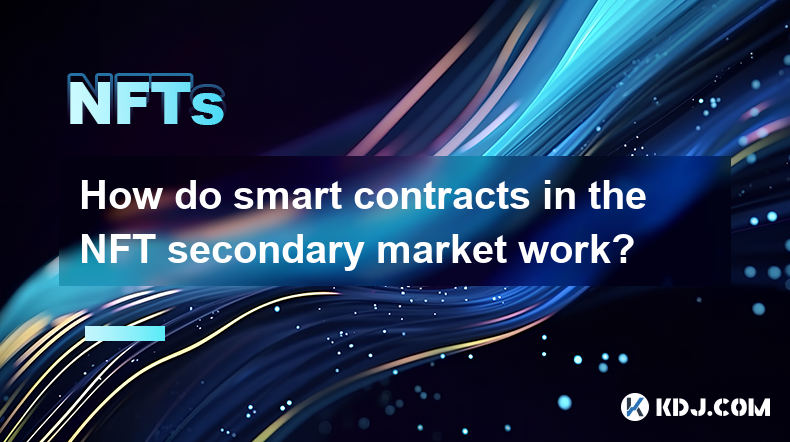
How do smart contracts in the NFT secondary market work?
Apr 03,2025 at 07:14am
Smart contracts play a pivotal role in the NFT secondary market, facilitating seamless transactions and enforcing predefined rules. These self-executing contracts with the terms of the agreement directly written into code are stored on the blockchain. In the context of NFTs, smart contracts automate the buying, selling, and transferring of digital asset...
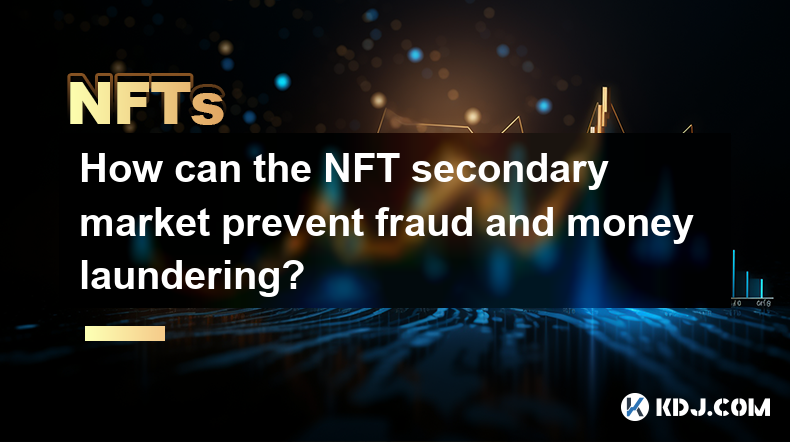
How can the NFT secondary market prevent fraud and money laundering?
Apr 03,2025 at 08:35am
The NFT secondary market has become a thriving hub for digital art and collectibles, but it also faces challenges in preventing fraud and money laundering. To tackle these issues, the market can implement various strategies and technologies to ensure a safer and more transparent trading environment. This article will explore how the NFT secondary market...

How are transaction fees in the NFT secondary market calculated?
Apr 04,2025 at 05:28am
The calculation of transaction fees in the NFT secondary market is a crucial aspect that both buyers and sellers need to understand. These fees can significantly impact the overall cost of transactions and the profits that sellers can make. In this article, we will delve into the various components that make up these fees, how they are calculated, and w...
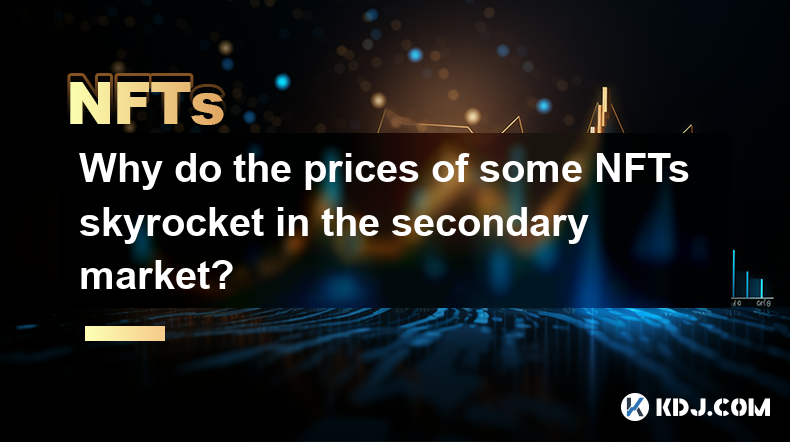
Why do the prices of some NFTs skyrocket in the secondary market?
Apr 06,2025 at 07:08am
The phenomenon of NFT prices skyrocketing in the secondary market is a fascinating aspect of the cryptocurrency and digital art world. Non-Fungible Tokens (NFTs) have taken the digital world by storm, and their value can surge dramatically after initial sales. Several factors contribute to this price surge, including rarity, demand, speculation, and the...
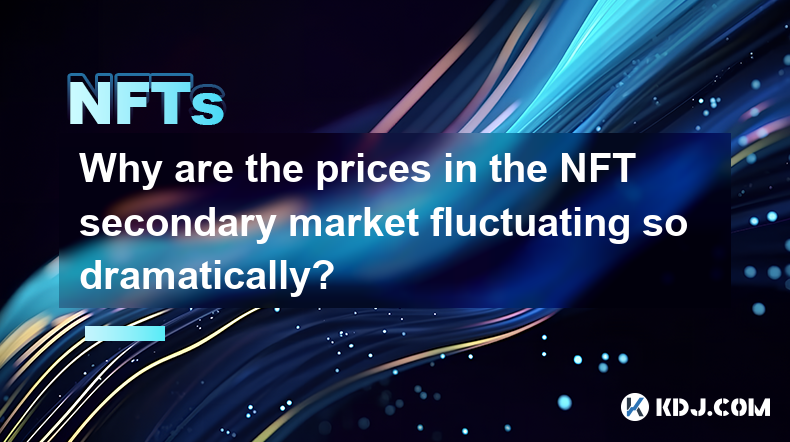
Why are the prices in the NFT secondary market fluctuating so dramatically?
Apr 03,2025 at 10:35pm
The NFT secondary market has been experiencing dramatic price fluctuations, leaving many in the cryptocurrency community puzzled and curious. To understand this phenomenon, it's essential to delve into the factors driving these price movements. From the impact of market sentiment and celebrity endorsements to the role of speculation and the unique natur...
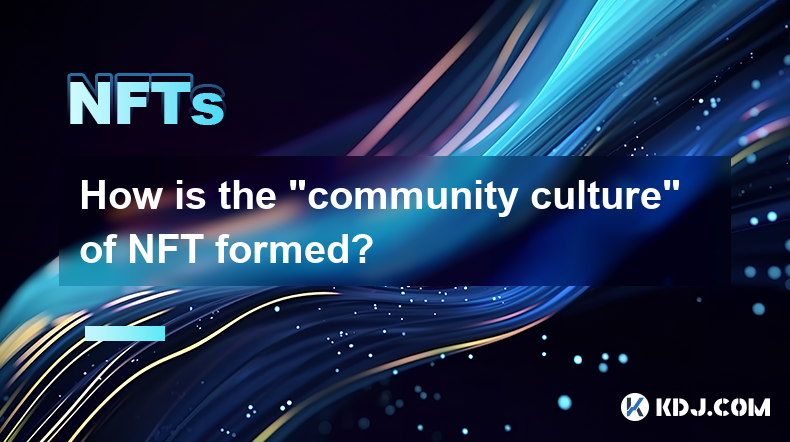
How is the “community culture” of NFT formed?
Apr 03,2025 at 11:07am
The formation of the 'community culture' within the NFT (Non-Fungible Token) space is a fascinating and multi-faceted process. It involves various elements such as shared interests, active engagement, and the creation of a sense of belonging among members. NFT communities often revolve around specific projects or artists, fostering a unique environment ...

How do smart contracts in the NFT secondary market work?
Apr 03,2025 at 07:14am
Smart contracts play a pivotal role in the NFT secondary market, facilitating seamless transactions and enforcing predefined rules. These self-executing contracts with the terms of the agreement directly written into code are stored on the blockchain. In the context of NFTs, smart contracts automate the buying, selling, and transferring of digital asset...

How can the NFT secondary market prevent fraud and money laundering?
Apr 03,2025 at 08:35am
The NFT secondary market has become a thriving hub for digital art and collectibles, but it also faces challenges in preventing fraud and money laundering. To tackle these issues, the market can implement various strategies and technologies to ensure a safer and more transparent trading environment. This article will explore how the NFT secondary market...

How are transaction fees in the NFT secondary market calculated?
Apr 04,2025 at 05:28am
The calculation of transaction fees in the NFT secondary market is a crucial aspect that both buyers and sellers need to understand. These fees can significantly impact the overall cost of transactions and the profits that sellers can make. In this article, we will delve into the various components that make up these fees, how they are calculated, and w...

Why do the prices of some NFTs skyrocket in the secondary market?
Apr 06,2025 at 07:08am
The phenomenon of NFT prices skyrocketing in the secondary market is a fascinating aspect of the cryptocurrency and digital art world. Non-Fungible Tokens (NFTs) have taken the digital world by storm, and their value can surge dramatically after initial sales. Several factors contribute to this price surge, including rarity, demand, speculation, and the...

Why are the prices in the NFT secondary market fluctuating so dramatically?
Apr 03,2025 at 10:35pm
The NFT secondary market has been experiencing dramatic price fluctuations, leaving many in the cryptocurrency community puzzled and curious. To understand this phenomenon, it's essential to delve into the factors driving these price movements. From the impact of market sentiment and celebrity endorsements to the role of speculation and the unique natur...

How is the “community culture” of NFT formed?
Apr 03,2025 at 11:07am
The formation of the 'community culture' within the NFT (Non-Fungible Token) space is a fascinating and multi-faceted process. It involves various elements such as shared interests, active engagement, and the creation of a sense of belonging among members. NFT communities often revolve around specific projects or artists, fostering a unique environment ...
See all articles





















































































